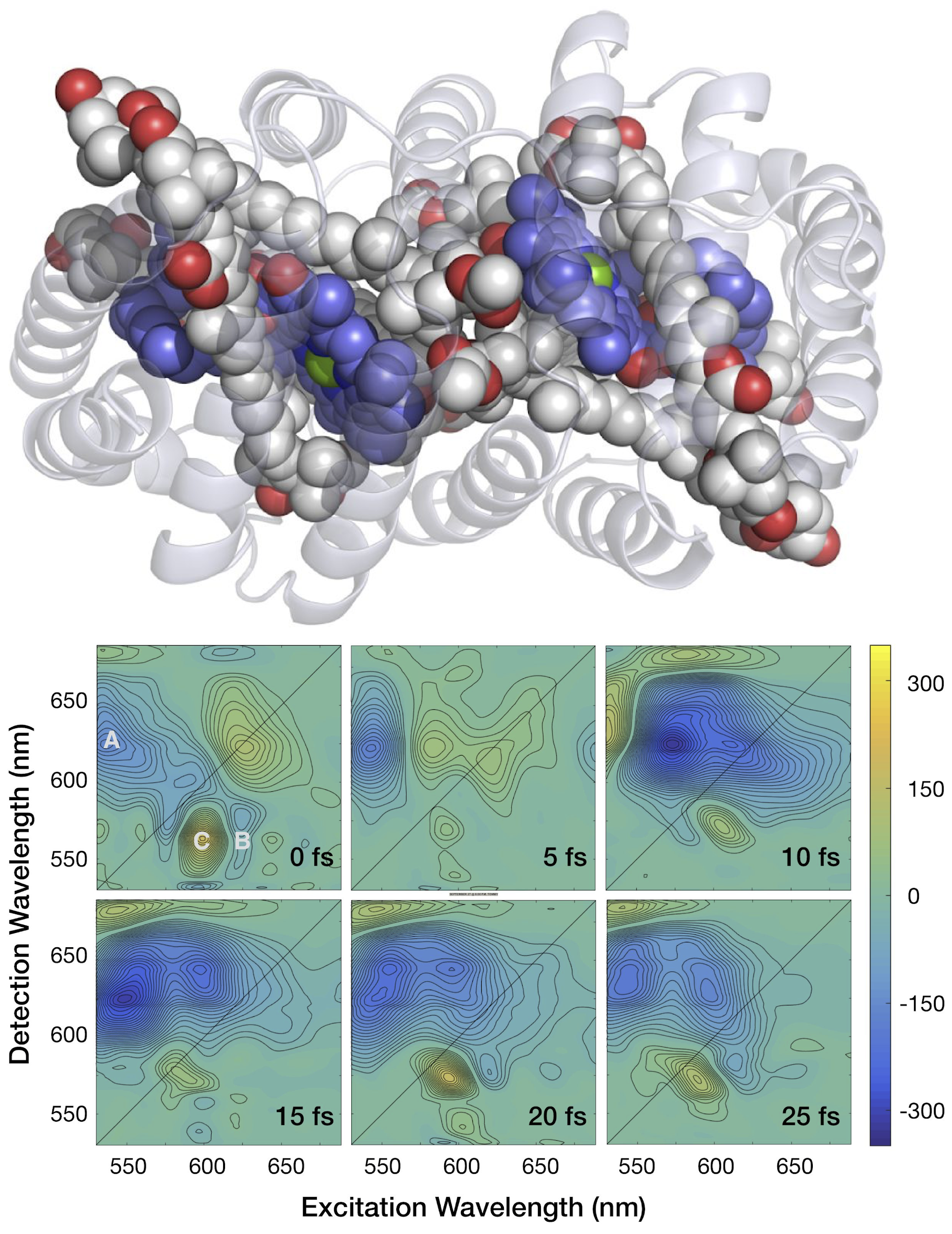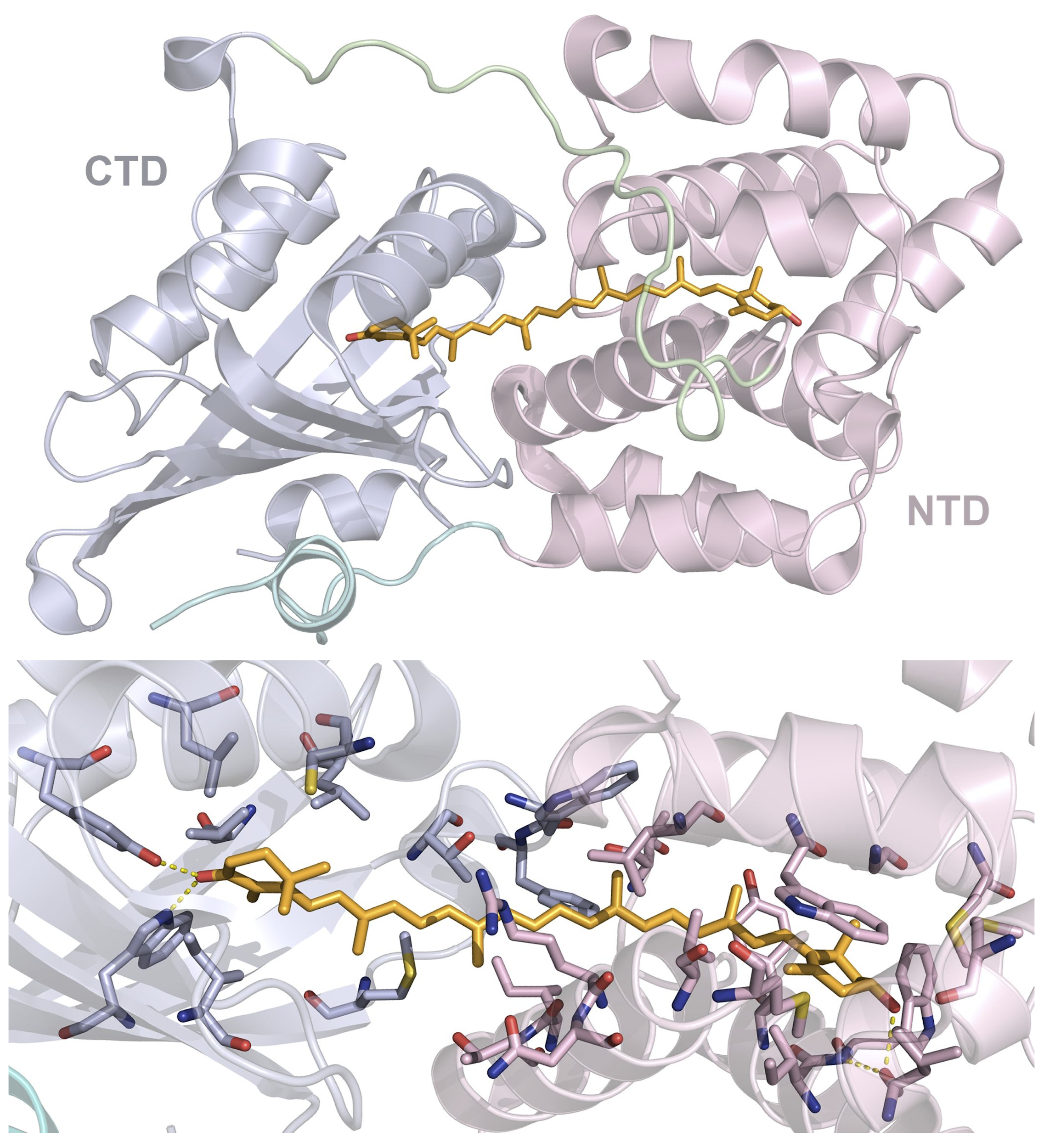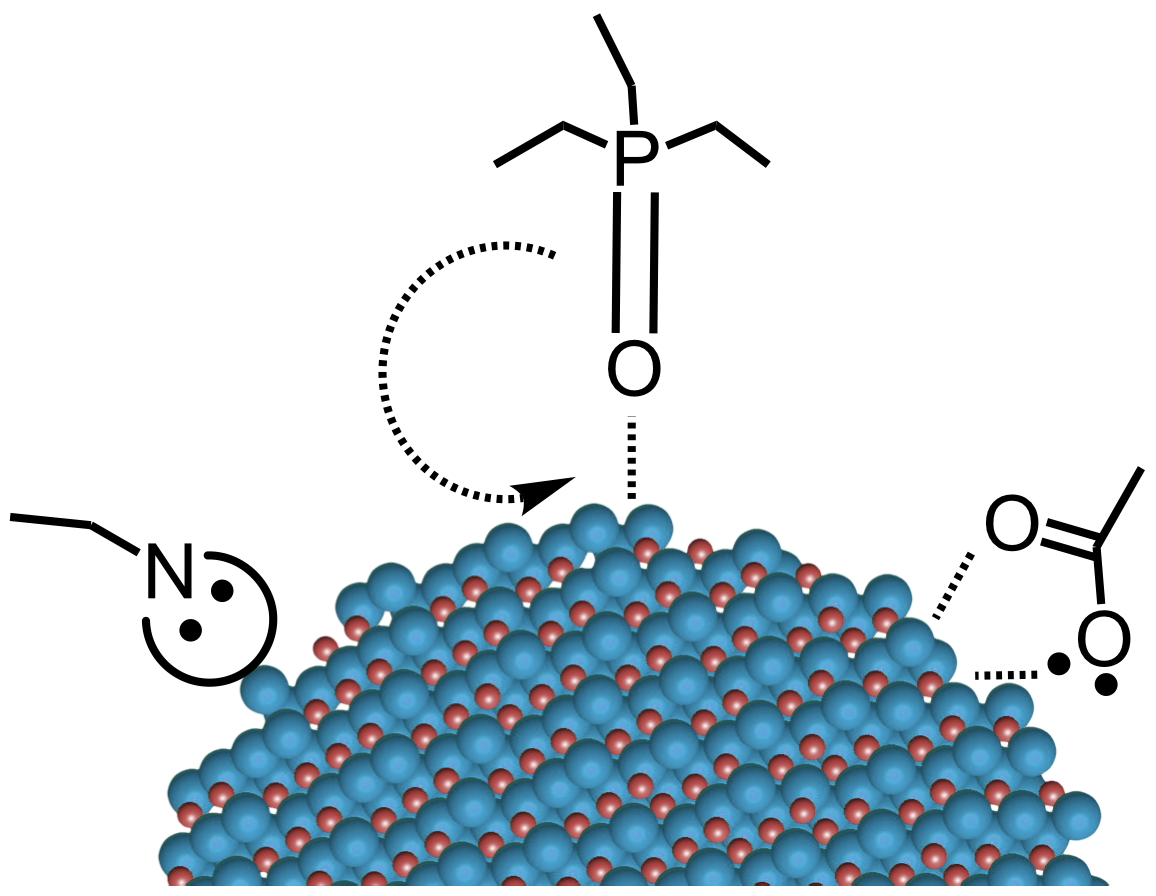Warren F. Beck

Research
Ultrafast Spectroscopy: Photosynthesis and Nanomaterials
(Research Description PDF)
The Beck group uses femtosecond two-dimensional electronic spectroscopy (2DES) to study photophysical and photochemical processes in photosynthesis and in nanomaterials. 2DES makes it possible to detect pathways of energy transfer and to determine the mechanisms that mediate them, including quantum coherence. Our aim is to determine the structural principles that can be used to design and optimize materials to capture solar energy for conversion to electricity or fuels.
In one project, we are investigating how carotenoids function in light harvesting and photoprotection mechanisms in photosynthesis. We have focused on the peridinin–chlorophyll a protein (PCP), a light-harvesting protein from marine dinoflagellates that incorporates a ketocarotenoid, peridinin, as its main light-absorbing chromophore. PCP represents an important example of a system in which the energy transfer function is optimized by the protein environment and by chemical modification of the active chromophore. Further, collective excitation of the peridinin–chlorophyll cluster of chromophores is essential to proper function. Energy absorbed in the mid-visible part of the solar spectrum by peridinin is transferred efficiently to chlorophyll a on the <10 fs timescale via a quantum coherent mechanism.

In a collaboration with Professor Cheryl Kerfeld (MSU–DOE PRL and LBNL), we are studying the photochemistry and structural dynamics associated with the photoactivation of the orange carotenoid protein (OCP) from cyanobacteria. OCP uses another ketocarotenoid, 3'-hydroxyechinenone (3hECN), as a light sensor and as a quencher of excited states in the cyanobacterial phycobilisome. We are also interested in the mechanism with which OCP serves as a quencher of singlet oxygen, a reactive oxygen species that is produced as a byproduct in photosynthesis by recombination of charge-separated states in the photosystem II reaction center. Here the ability of OCP to stabilize low-lying triplet states of 3hECN is likely to be very important.

Lastly, we are using 2DES as an important new probe of photoexcited states in semiconductor quantum dots. Our initial focus is on vibronic excitons and coherent energy transfer processes. By tuning the mixing of the vibrational modes of surface capping ligands with the core electronic states of the quantum dot, we can control the quantum yield and lifetime of charge-separated states. This work will find important applications in photovoltaic cells and light-emitting devices.

Contact / Webpage
Area(s) of Interest
Physical (Ph)
Biological (Bi)
Chemical Physics (CP)
Inorganic (In)
Material (Ma)
Selected Publications
Femtosecond heterodyne transient-grating studies of nonradiative decay of the S2 (1 1Bu +) state of β-carotene: Contributions from dark intermediates and doublequantum coherences, Ghosh, S.; Bishop, M. M.; Roscioli, J. D.; Mueller, J. J.; Shepherd, N. C.; LaFountain, A. M.; Frank, H. A.; Beck, W. F., J. Phys. Chem. B 2015, 119, 14905- 14924. DOI: 10.1021/acs.jpcb.5b09405.
Torsional Dynamics and Intramolecular Charge Transfer in the S2 (1 1Bu +) Excited State of Peridinin: A Mechanism for Enhanced Mid-Visible Light Harvesting, Ghosh, S.; Roscioli, J. D.; Bishop, M. M.; Gurchiek, J. K.; LaFountain, A. M.; Frank, H. A.; Beck, W. F., J. Phys. Chem. Lett. 2016, 7, 3621-3626, DOI: 10.1021/acs. jpclett.6b01642.
Excitation Energy Transfer by Coherent and Incoherent Mechanisms in the Peridinin– Chlorophyll a protein, Ghosh, S.; Bishop, M. M.; Roscioli, J. D.; LaFountain, A. M.; Frank, H. A.; Beck, W. F., J. Phys. Chem. Lett. 2017, 8, 463-469. DOI: 10.1021/acs. jpclett.6b02881
Quantum Coherent Excitation Energy Transfer by Carotenoids in Photosynthetic Light Harvesting, Roscioli, J. D.; Ghosh, S.; LaFountain, A. M.; Frank, H. A.; Beck, W. F., J. Phys. Chem. Lett. 2017, 8, 5141−5147. DOI: 10.1021/acs.jpclett.7b01791
Fluorescence and Excited-State Conformational Dynamics of the Orange Carotenoid Protein, Gurchiek, J. K.; Bao, H.; Domínguez-Martín, M. A.; McGovern, S. E.; Marquardt, C. E.; Roscioli, J. D.; Ghosh, S.; Kerfeld, C. A.; Beck, W. F., J. Phys. Chem. B 2018, 122, 1792–1800. DOI: 10.1021/acs. jpcb.7b09435.
Structural Tuning of Quantum Decoherence and Coherent Energy Transfer in Photosynthetic Light Harvesting, Roscioli, J. D.; Ghosh, S.; LaFountain, A. M.; Frank, H. A.; Beck, W. F., J. Phys. Chem. Lett. 2018, 9, 5071–5077, DOI: 10.1021/acs. jpclett.8b01919.
CV
B.S., 1982, Davidson College
Ph.D., 1988, Yale Univ.
Miller Institute Postdoctoral Fellowship, 1989–91, Univ. of California, Berkeley
Awards
| Year | Award | Organization |
|---|---|---|
| 2015 | Natsci Teaching Prize | College of Natural Science |
| 1994 | Cottrell Scholars Award | Research Corporation |
| 1993 - 1994 | Teaching Fellowship | Lilly Endowment |
| 1992 - 1995 | Searle Scholarship | Chicago Community Trust/Searle Scholars Program |
| 1989 - 1991 | Miller Institute Postdoctoral Fellowship | University of California, Berkeley |
| 1988 | Ph.D. | Yale University |
| 1988 | Richard Wolfgang Dissertation Prize | Yale University Department of Chemistry |
| 1982 - 1985 | Graduate Fellowship | National Science Foundation |
| 1982 | Phi Beta Kappa | Phi Beta Kappa |
| 1982 - 1986 | Kent Fellowship | Yale University Department of Chemistry |
| 1982 | Bachelor of Science Cum Laude | Davidson College |